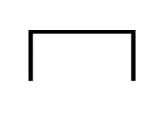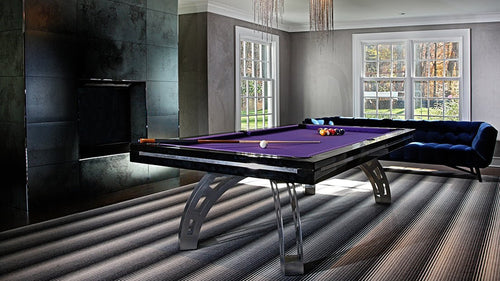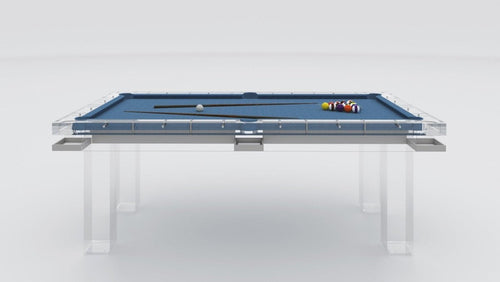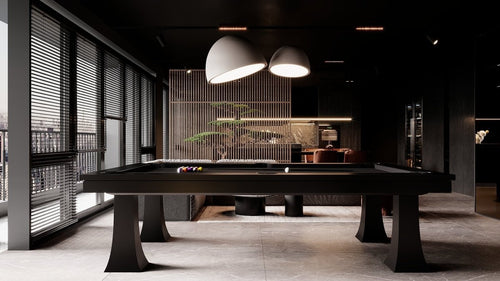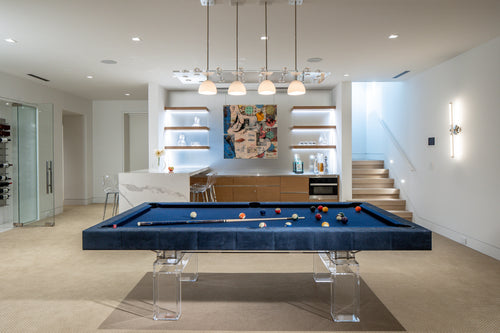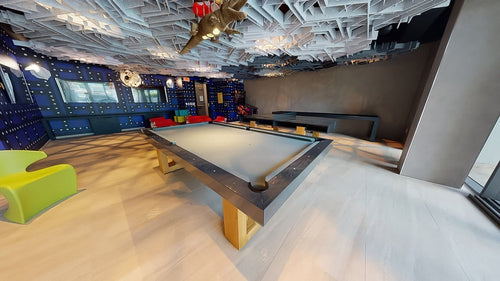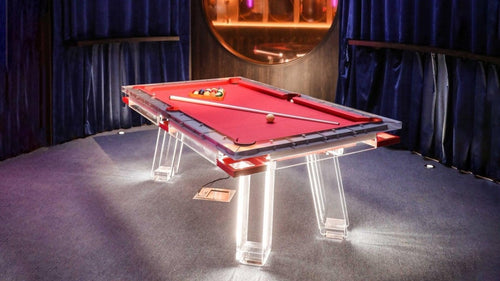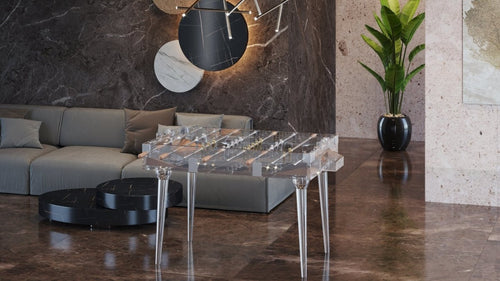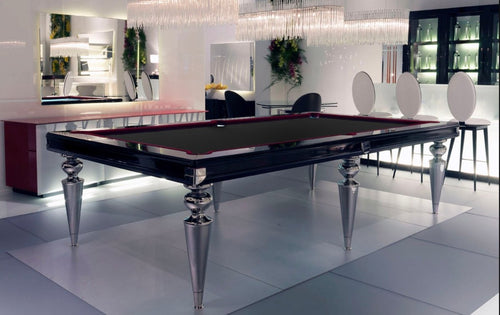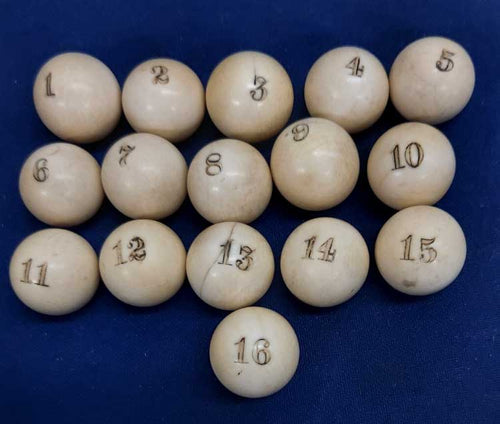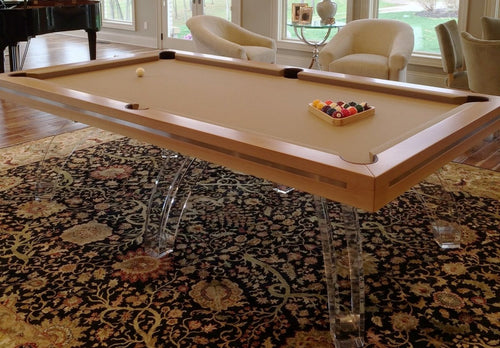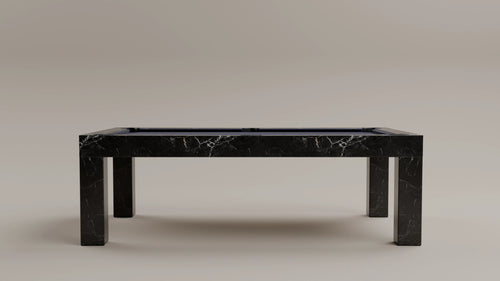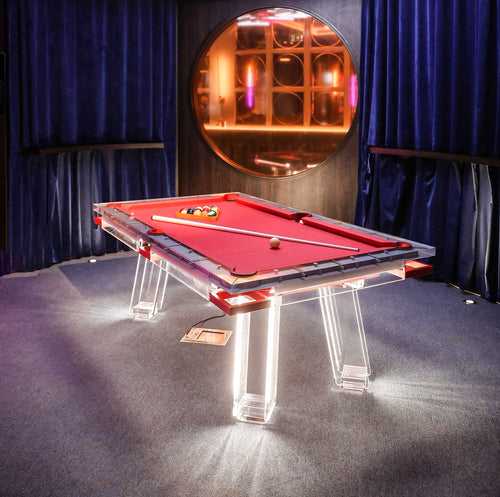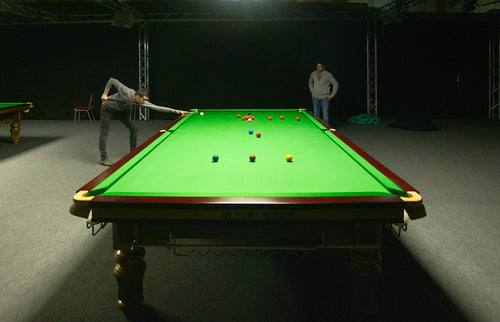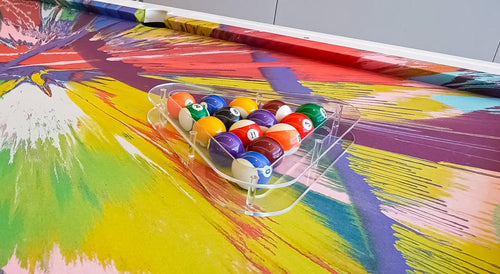Enjoy our modern designs
Estimated Read Time: 5 mins | Updated:
When you walk into a pool hall or set up your home billiards table, one of the first things you'll notice is players applying chalk to their cue sticks. This seemingly simple action is a cornerstone of effective pool play, enhancing performance and ensuring fair competition. In this brief guide, we'll explore why people use chalk for pool sticks, delve into the myriad benefits it offers, and cover the best practices.
What Is Pool Chalk?
Pool chalk is a specially formulated powder used on cue tips. Unlike classroom chalk, which is primarily composed of calcium carbonate, pool chalk typically contains a mixture of abrasives like silica and a binding agent. This composition creates the necessary friction between the cue tip and the cue ball, which is vital for accurate shots and overall cue control.
Why Do Players Chalk Their Pool Sticks?
Increasing Friction Between the Cue Tip and the Cue Ball
The primary reason players chalk their pool sticks is to increase friction between the cue tip and the cue ball. Both surfaces are smooth and can cause the cue to slip, especially when applying spin or power. Chalk creates a rougher surface on the cue tip, enhancing grip and reducing the likelihood of slippage, allowing for more control and accuracy.
Preventing Miscues
A miscue occurs when the cue tip doesn't strike the center of the cue ball, causing it to slide off at an angle. This off-center hit often results in unintended spin or a missed shot, disrupting your strategy.
Chalking the cue tip is essential to reduce miscues. The gritty texture of chalk, made from materials like silica and corundum, increases friction between the tip and the cue ball. This enhanced grip ensures more precise and consistent contact, preventing the tip from slipping during the shot.
The consequences of a miscue go beyond a missed shot—it counts as a stroke and can end your turn, giving your opponent an advantage. This is especially critical when applying spin, as off-center hits are more prone to causing miscues. By maintaining proper chalking, you enhance your control and accuracy, setting the stage for better spin management in your next moves.
Enhancing Spin Control
Advanced players rely on spin—backspin, topspin, and sidespin—to strategically control the cue ball’s movement:
- Backspin: Causes the cue ball to reverse direction after hitting an object ball, keeping it near the target.
- Topspin: Propels the cue ball forward, improving positioning for the next shot.
- Sidespin: Curves the cue ball left or right, helping navigate around obstacles.
Chalk is crucial for effective spin control. It provides the necessary friction to grip the cue ball during off-center hits. Without adequate chalk, the cue tip would slip, making it difficult to apply and control spin. Different types of chalk can also affect how much spin you can impart before risking a miscue, offering greater versatility in your shots.
Spin enhances gameplay by allowing players to set up challenging position shots, avoid obstacles, and control the cue ball’s speed after contact. This precision distinguishes advanced players, enabling more sophisticated strategies.
For example: executing a draw shot involves applying backspin to pull the cue ball back after striking the object ball. Proper chalking ensures the cue tip grips the ball, allowing the backspin to work effectively and set up your next move.
Spin control allows for greater manipulation of the cue ball beyond its initial direction, enhancing your overall control and strategic advantage in the game.
Protecting the Cue Tip
Regularly applying chalk also protects the cue tip from wear and tear. Chalk acts as a buffer, reducing the impact of repeated strikes, maintaining the tip’s roughness for grip, and extending the tip’s lifespan.
Filling in Imperfections on the Cue Ball
Over time, cue balls can develop minor imperfections. Chalk can help fill in these flaws, promoting a smoother contact surface and improving shot consistency.
Absorbing Moisture
Chalk absorbs moisture from sweaty hands or the environment, keeping the cue tip dry. This is crucial for preventing slippage and maintaining control and accuracy.
Enhancing Concentration and Establishing a Ritual
Chalking the cue serves as a mental preparation ritual. This routine helps players focus, relax, and mentally prepare for each shot, contributing to steadier nerves and more confident play.
Benefits of Using Chalk on Pool Sticks

Integrating the reasons above, chalking your pool stick offers these key benefits:
- Enhanced Grip and Control: Chalk increases friction, ensuring controlled and accurate shots.
- Reduced Miscues: Minimizes unintended cue slippage for consistent gameplay.
- Improved Spin Execution: Allows for effective spins, enabling advanced techniques.
- Extended Cue Tip Longevity: Protects the cue tip from wear, saving on replacement costs.
- Smoother Contact Surface: Fills imperfections on the cue ball for consistent shots.
- Moisture Management: Keeps the cue tip dry for optimal performance.
- Mental Preparation: Enhances focus and shot visualization.
- Ritualistic Calmness: Provides a calming routine, aiding mental readiness.
Best Practices for Chalk Application
Use the Right Chalk
- Quality Matters: Invest in high-quality chalk specifically for pool cues. Premium chalk adheres better and provides consistent performance.
- Choose the Right Color: Selecting a chalk color that matches your table felt can minimize visible chalk marks, keeping the table cleaner.
Proper Application Technique
- Clean the Cue Tip: Use a soft cloth to remove any debris or old chalk buildup.
- Apply Evenly: Use a brushing motion to apply chalk for even coverage.
- Don't Overdo It: Apply a light coat to avoid excessive chalk dust.
Reapply Regularly
Reapply chalk before critical shots or as needed to maintain optimal performance.
Use Chalk Holders
Chalk holders keep your chalk accessible and prevent it from getting lost or misplaced.
Choosing the Right Chalk for Your Pool Stick

Chalk Quality
- Premium Brands: High-quality chalk like Master, Blue Diamond, and Kamui adhere well and enhance performance.
- Avoid Cheap Alternatives: Cheaper chalk may not adhere well and can produce excessive dust.
Chalk Color
- Match Your Felt: Matching chalk color to your table’s felt keeps the table looking cleaner.
- Visibility: Some players prefer contrasting colors for better visibility on the tip.
Chalk Application Tools
- Chalk Holders: Makes chalking easier and keeps chalk handy.
- Tip Shapers: Maintain the proper shape and texture of your cue tip for better chalk adhesion.
Conclusion
Chalking your pool stick is essential for effective gameplay, enhancing friction, reducing miscues, and improving spin control. Additionally, it serves as a mental preparation ritual that aids concentration. Whether you're a beginner or a seasoned player, incorporating regular chalking into your routine is vital for pool success. So next time you gear up for a game, don’t forget to chalk up—your shots will thank you!
Want to Upgrade Your Game?
Find pro-grade chalk, cue tips, and premium equipment at Pool Table Portfolio. Shop the best in billiards and step up your play.
Expore Our TablesNeed product advice? Contact us for expert tips and recommendations!

